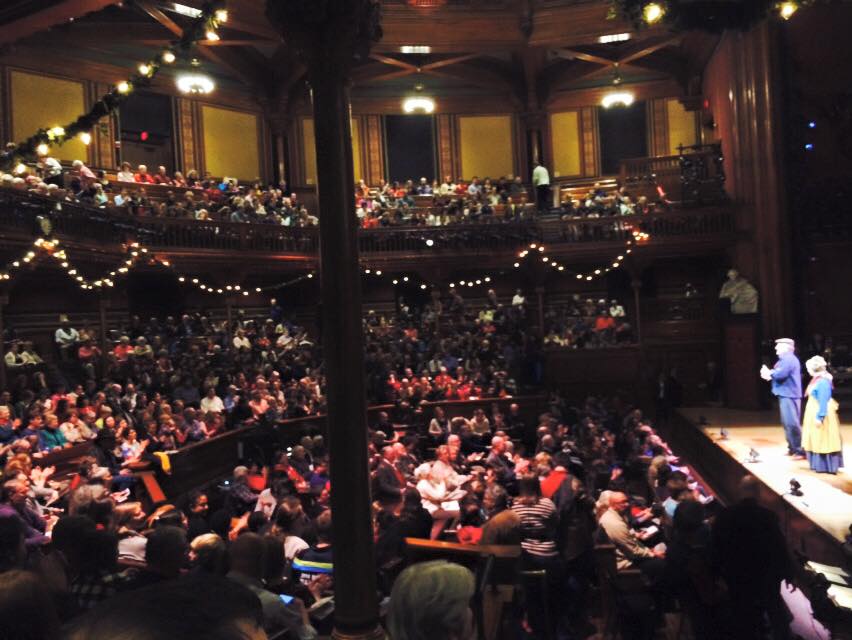|
We have been trying out a new format at church. I have mentioned it before, actually. We are calling it our "Second Sunday" series--it is always the second Sunday of the month--and it doesn't really have a sermon. I do talk for four minutes or so about the theme. Otherwise there are readings and music. The first service was a bit of a mess as we figured things out. The second was all readings from The Hobbit that address a theme of surprise journeys. Yesterday, on the Second Sunday of Advent, we read from a variety of texts that attempt to make sense of the season in more "modern" terms. While I was putting it together I asked myself what sorts of things have influenced how we celebrate today... Now, Christmas itself is the way some traditions--and not even all Christian ones--have historically made sense of an even more ancient winter observance that lies beneath all the modern holidays. Maybe this is hard to grasp for some people but, of course, it is true. I think that sometimes we have trouble comprehending just how ancient this solstice holiday really is. It is so old, in fact, that we can't really remember its origins. That distance is hard to grasp. This is why we keep reinterpreting it. Sticking just with Christmas, we see an effort over the years to wrap something very old in a relatively new holiday cloth. Jesus probably wasn't born on the 25th of December. We humans just needed him to be so that we had a reason to celebrate. The real show resides in the short days and the cold, inclement weather. If anyone needs any evidence of the pagan roots of Christmas they don't need to look any further than one of the carols we sang at yesterday's service. The Sans Day Carol is a Cornish folk song and a tribute to the holly plant. The song calls it the “first tree in the greenwood." Yes, the lyrics find ways to include Christmas imagery but..one couldn't help but feel a bit like a druid singing it. Humanity has always ascribed magical properties to holly. In one of the books we read from--Dark is Rising by Susan Cooper--the heroes put it over the door to keep the evil spirits out. That is a modern book. However, in this case and in others, the author is alluding to ancient tradition. We can't escape the old holiday. All we can do is change its name and add new traditions that help us to understand. This is the season of the apparent death of the Earth. No matter how we perceive winter--as a recreational bonanza, a dangerous annoyance, or somewhere in between--we need to understand how it would have looked before we could take a picture from outer space. We need to consider a time when people couldn't be quite sure that the spring--and with it life itself--would return. This is why we find those images of holly, ivy, and the long-lasting evergreens in the first place. They are proof that there is still life and abundance under the ice and snow. Now it is easier to know that the season of famine is temporary. However, we have our own fears, don't we? We hope that maybe someday these fears will also seem quaint and unfounded. Until then we also--like the ancients--need that reassurance that comes from gathering together in the old ways. We need the holly and the ivy. We need to pray and sing. The mystery of life, the cycles of the seasons, and the motions of the heavens all reside deep inside us. So we create art--including worship--to explain the profound feeling we have as the world dies before being reborn once again Here is a video of the band yesterday leading that carol...
0 Comments
Leave a Reply. |
Adam Tierney-EliotI am a full-time pastor in a small, progressive church in Massachusetts. This blog is about the non-church things I do to find spiritual sustenance. Archives
June 2024
Categories
All
|

 RSS Feed
RSS Feed